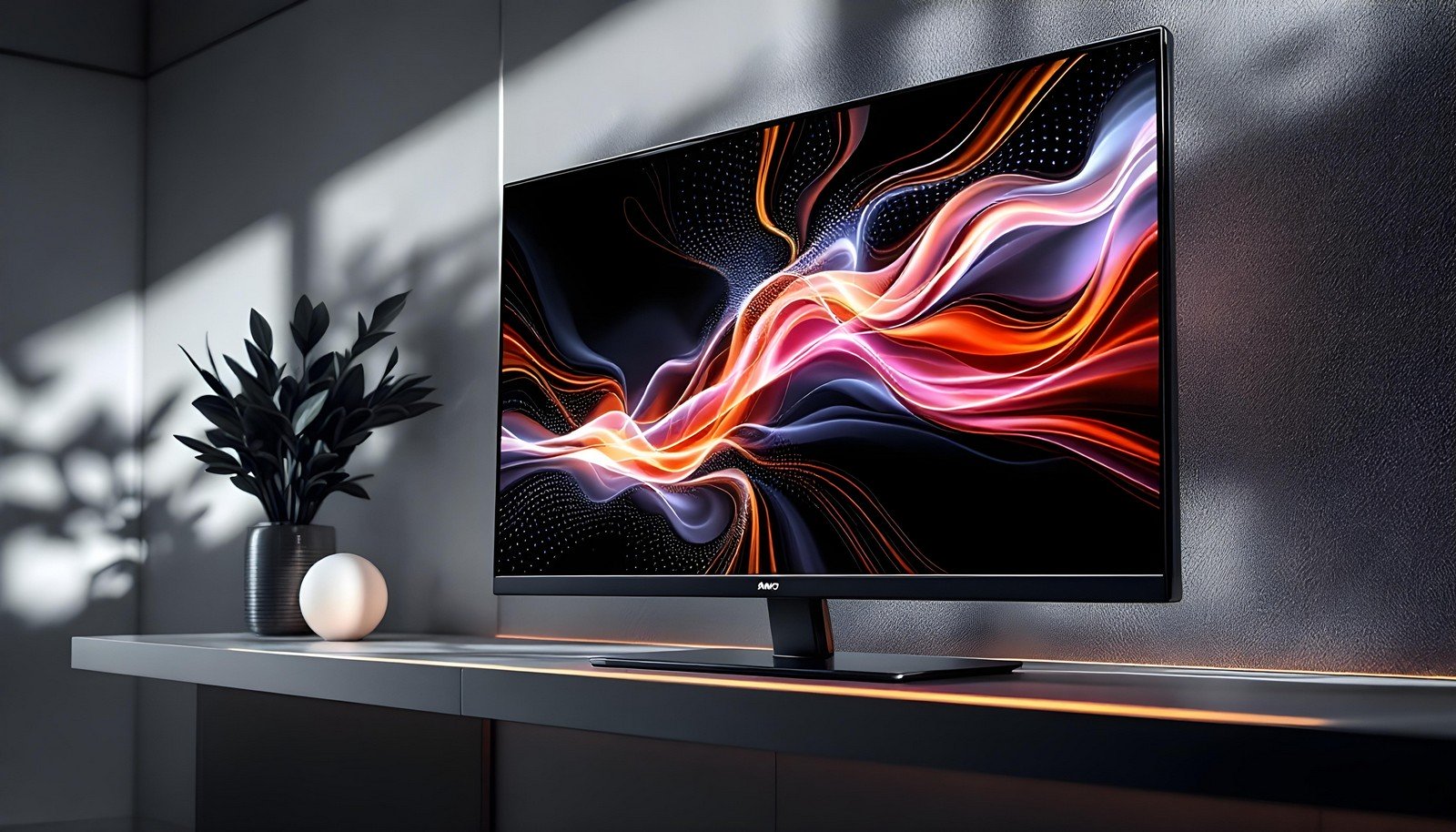AMOLED Display

Quick Navigation:
- AMOLED Display Definition
- AMOLED Display Explained Easy
- AMOLED Display Origin
- AMOLED Display Etymology
- AMOLED Display Usage Trends
- AMOLED Display Usage
- AMOLED Display Examples in Context
- AMOLED Display FAQ
- AMOLED Display Related Words
AMOLED Display Definition
AMOLED (Active Matrix Organic Light Emitting Diode) is a display technology widely used in smartphones, televisions, and other modern devices. It features individual pixels that emit their own light when an electrical current passes through, eliminating the need for backlighting. AMOLED displays are known for their vibrant colors, deep blacks, and energy efficiency, particularly when displaying darker images. The active matrix element enables faster refresh rates and greater control over each pixel, making them ideal for high-definition and dynamic content.
AMOLED Display Explained Easy
Think of AMOLED as a magic canvas. Each tiny dot (pixel) on the screen can light up in different colors by itself. Some dots can stay off to show deep black, while others glow brightly for vivid images. This makes the pictures on your screen look super clear and colorful, just like a magical painting!
AMOLED Display Origin
The development of AMOLED displays began in the early 2000s as an evolution of OLED technology. Their commercial use was first seen in mobile devices, with brands like Samsung pioneering its adoption in smartphones. Over the years, AMOLED has become a standard for premium displays across various industries.
AMOLED Display Etymology
The term “AMOLED” combines “Active Matrix” (a technology for controlling pixels) with “OLED” (Organic Light Emitting Diode, the display type).
AMOLED Display Usage Trends
AMOLED displays have become increasingly popular due to their superior quality and energy efficiency. They are commonly used in high-end smartphones, wearable devices, and televisions. Their ability to deliver superior contrast and thinner profiles has made them the preferred choice for manufacturers focusing on premium designs. Over the years, AMOLED usage has expanded into laptops, automotive displays, and virtual reality headsets.
AMOLED Display Usage
- Formal/Technical Tagging:
- Display Technology
- OLED Variants
- Active Matrix Displays - Typical Collocations:
- "AMOLED screen technology"
- "vibrant AMOLED displays"
- "energy-efficient AMOLED"
- "AMOLED vs LCD comparison"
AMOLED Display Examples in Context
- Modern smartphones like flagship models use AMOLED displays for their vibrant colors and deep blacks.
- Smartwatches often employ AMOLED screens to maximize battery life with dark watch faces.
- High-end televisions with AMOLED panels offer cinema-grade visuals with lifelike quality.
AMOLED Display FAQ
- What is AMOLED technology?
AMOLED is a type of display where each pixel emits its light, providing superior color and contrast. - How does AMOLED differ from OLED?
AMOLED uses an active matrix to control pixels more efficiently, offering faster refresh rates and better power management. - Why are AMOLED displays energy-efficient?
AMOLED doesn’t require backlighting, and black pixels remain off, consuming no power. - Are AMOLED screens better than LCDs?
Yes, in terms of color vibrancy, contrast, and thinness, AMOLED is superior, but LCDs can be more affordable. - Do AMOLED screens degrade over time?
Yes, AMOLED panels can experience burn-in or color degradation after prolonged use. - What devices commonly use AMOLED displays?
Smartphones, smartwatches, TVs, laptops, and VR headsets frequently utilize AMOLED technology. - Can AMOLED be used outdoors?
Yes, with high brightness levels and adaptive features, AMOLED displays perform well in sunlight. - Why are AMOLED displays expensive?
The manufacturing process for AMOLED is complex, and its materials are costly compared to alternatives like LCD. - What is the lifespan of an AMOLED screen?
It depends on usage patterns, but modern advancements have significantly extended their durability. - Are AMOLED displays suitable for gaming?
Absolutely, thanks to their fast response times and high contrast.
AMOLED Display Related Words
- Categories/Topics:
- Display Technology
- Smartphones
- Energy Efficiency
- High-Definition Displays
Did you know?
The first AMOLED screen for a consumer product debuted in 2008 in a mobile phone. Today, the technology powers even foldable and rollable displays, paving the way for futuristic devices!
PicDictionary.com is an online dictionary in pictures. If you have questions or suggestions, please reach out to us on WhatsApp or Twitter.Authors | Arjun Vishnu | @ArjunAndVishnu

I am Vishnu. I like AI, Linux, Single Board Computers, and Cloud Computing. I create the web & video content, and I also write for popular websites.
My younger brother, Arjun handles image & video editing. Together, we run a YouTube Channel that's focused on reviewing gadgets and explaining technology.



Comments powered by CComment